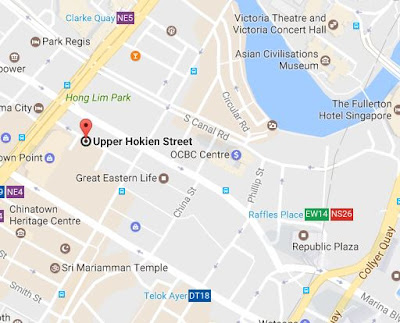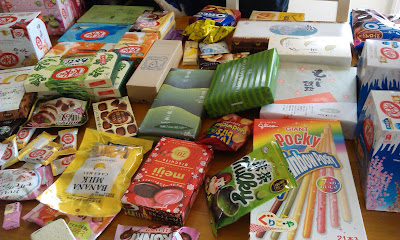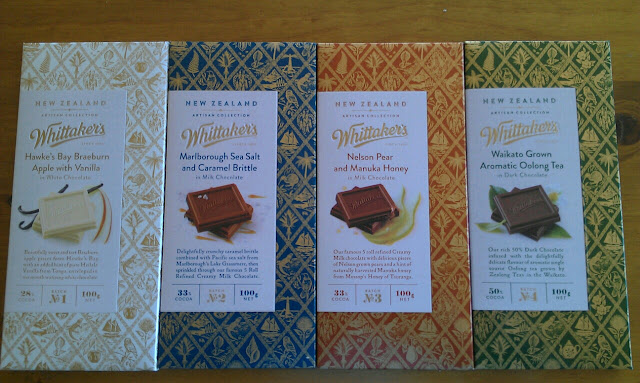Singapore's best and Korea's warm(ish) welcome
Korea 2016: Day 1
Transit in SingaporeBreakfast in Hong Lim Food Centre
Irrelevant errands
Lunch in Old Airport Food Centre
Arriving in Korea at midnight
Transit in Singapore
As it often happens, strategic ticket-booking to minimise costs resulted in our being stuck in Singapore between 8am and 2pm during transit. However, I'd hardly consider this tedious, as a few short hours in Singapore could be enough time for an extensive food tour, even if one were to resign themselves to Changi airport, whose foodcourts and dining options could never be conquered in that amount of time. For those like me whose minds never stop revolving around food, six hours is enough to make room for two or three meals, dictated by careful planning, good companions, and a drive to keep eating. All three I had, and all I had to do was not let the heat get to me.Breakfast in Hong Lim Food Centre
A half-hour or so train ride from Changi Airport is Raffles Place Station, and a further ten or so minutes' walk is one of many hawker centres offering their mouth-watering plethora of local dishes for nothing but the coins left over from the train fare. Having arrived at 10am, only half the stalls, if even, were operating, but even this was enough choice for the indecisive like me. |
| Raffles Place Station to Hong Lim food centre |
We had one high recommendation with which to go by, the famous Outram Park Fried Kway Teow Mee, which is considered the best in Singapore. Salty, sweet, and garlicky, this dish was good in all the right places and made even more decadent with pieces of pork fat and creamy, savoury cockles. For less than $5, this was more than good value to me.
 |
| Outram Park stall |
 |
| Outram Park fried kway teow |
Of course, ordering from hawker centres should also be based on one's particular taste at that time. Mine was a fried fish bihun. Also known as a fish head noodle soup, nowadays it's more of a misnomer, as the cuts used can be from any part of the fish. It was admittedly unmemorable, and the only saving grace for this is that I can't even recall the name of the stall I bought it from. Later I found Jin Hua to be just around the corner, which I've heard is a much more satisfying experience.
The last dish from Hong Lim I tried was the Tai Wah Pork Noodle. The familiar name is shared with another stall whose recently-awarded Michelin star sent the gastronomic world into frenzy. I've also heard that stalls can vary heavily despite sharing the same name, leaving me with both high hopes and low expectations.
 |
| Tai Wah stall |
 |
| Tai Wah pork noodles |
The noodles did not disappoint, dry chewy noodles with pork mince dressed in vinegar, but we found that even with the smooth gelatinous broth the sharpness from the acid was overwhelming in some mouthfuls. Nonetheless, it's not a bad dish, though we would later try the Michelin-starred Tai Wah on our return transit.
Irrelevant errands
As we had a prior appointment in Raffles City, we made the short walk up. Though sweltering, the buildings and scenery makes for a nice trip. While we did not shop, the area is home to a fair number of malls, which I speculate can provide a good amount of entertainment. Conveniently located within walking distance of four train stations, we took advantage of Esplanade station's proximity to Raffles City to take the yellow line to Dakota, where we were to pursue our next meal.
Lunch in Old Airport Food Centre
The transit in Singapore this time around revolved around Old Airport Food Centre because of so many suggestions online of three particularly legendary stalls located here. By searching the opening hours of these stalls we managed to manipulate our timetable to accommodate this visit, a destination on its own, and rightly so.
Old Airport Food Centre is located between Mountbatten and Dakota stations, taking approximately ten and five minutes' walk respectively. It houses over 150 stalls, all of which are recorded in detail on this blog (keeping in mind that stalls can change rapidly). It's a wide expanse of land discernible by a giant sign and the rows of tables and chairs visible from the footpath, and having visited close to midday it was noticeably busier than Hong Lim was in late morning. In a time constraint and already pretty hungry, we were keen to sit and eat quickly.
The first stall frequently mentioned countless times having scoured the internet for the best Singaporean eats is Nam Sing Hokkien Mee. A combination of egg and rice noodles with seafood, pork, and other condiments, Nam Sing serves the light version in a light gravy quickly soaked up to a drier form. This stall was the trickiest in terms of timing, as it had odd operating hours that was also influenced by whether or not the chef is tired. And in this heat, I thought it fair enough. However, it meant that this was the only time in our scheduled days in Korea that we could visit, making it almost a now-or-never experience. But luck was on our side, and the uncles were awake and cooking their dear hearts out.
 |
| The famed Nam Sing Hokkien Mee stall |
And was it worth it? I would say so. It was a flavourful light gravy mixed throughout noodles accompanied by a great sambal and some lime to lift the whole dish. The ever-present pork fat was luxurious, and the squid made for great texture. The one issue with this dish was the texture of the prawns, of which I have never had seafood so overcooked. But I'll admit that it would not stop me from returning to devour a plate to myself.
 |
| Nam Sing's hokkien mee |
The second legendary stall is Toa Payoh Rojak. Rojak, a sort of cheat's version of a salad, is made of sliced fruits and vegetables, youtiao dough sticks, fried tofu and other fritters, tossed in a shrimp and chilli sauce. Though a strange-sounding mix of ingredients, one should really try it, and Toa Payoh is a good place to start. Even before it opened there were diners ready to queue, and a couple of minutes past opening, there was a decent wait for a plate. Rumours dictate that the old man makes a better rojak than his son, and being in for another stroke of luck, we were served by him.
 |
| Toa Payoh rojak |
I've had a fair share of fruit rojak, many of which I've been disappointed in due to their chunky fruits and shortcuts of bottled sauces. Toa Payoh's rojak, however, is miles above what I've had before. The salad is sized just right for a mouthful, and generous amounts of crushed peanuts provided good texture. The sauce, like much of any good Southeast Asian cuisine, was the perfect balance of sweet, salty, sour, and spicy, packing enough wallop with the chilli to open up the taste buds and leave me salivating for more. Toa Payoh is a must-have in Old Airport Food Centre, and now I know why.
One can't eat a great meal and not have dessert. The last stall in Old Airport we visited was Lao Ban Soya Beancurd. Responsible for a large beancurd dessert boom in Singapore, Lao Ban became a franchise producing tau fu fa. I already enjoy tofu products, but Lao Ban was a revolution in sweet tofu dessert. It was silky smooth and had none of the leftover cloying flavour of savoury soybean that some can have, instead refreshingly cold and sweet with a taste like cotton candy. We devoured this in no time flat, happy to cool ourselves from the spicy rojak and the humid Singapore afternoon heat.
 |
| Don't be fooled by its plainness - Lao Ban's tau fu fa made for a great dessert |
A last stall we did not have room to visit was Freshly Made Chee Cheong Fun, though rest assured we will be returning someday. One of these stalls would have been enough for me to recommend going out to the quiet area where Old Airport Food Centre is located. All three in one makes it a must-go.
Arriving in Korea at midnight
We landed in Korea's Incheon airport at around 10pm at night, and after customs we boarded the train bound for Seoul station at about 11pm. While there is an express train that stops only at stations with transfers, this only operates until about 10pm at night, leaving us to take the normal train. By the time we reached Seoul station it was midnight, and trains had ceased operations, as mentioned in my previous blog post, leaving us to take a taxi.
We were prepared for the worst, but a light jacket would have done us fine because it was particularly warm that evening. I was told later that these couple of days in Seoul were warmer than typical at this time of year. This was fortunate, as the taxi terminal outside the main entrance of Seoul station had a long queue and oddly few taxis to work through the line. Many Koreans phoned for a taxi, leaving us frustrated with the rate at which vacant taxis came as compared to hired ones. It took about twenty-five minutes before my family caught two between the five of us, and awkwardly, with the aid of Sister#2's broken Korean and the booking printout we were able to communicate the name of the hotel where we were headed.
However, even this was unsuccessful. With more than one branch, both of the taxi drivers had issues in locating the right hotel on the first (and second) go. Luckily all in the same area, we still endured plenty of late-night stress, with the taxi meter reaching ₩8,000-9,000 each, despite a predicted ₩5,000. Aided by low grumbling and a lot of scoffing, it was an unpleasant ride. Taxis would not be a form of transport I recommend in Korea, unless you are reaching a large landmark or a very general area (like "Myeongdong"). It was not the best start, but travelling at this time of night does that.







Comments
Post a Comment